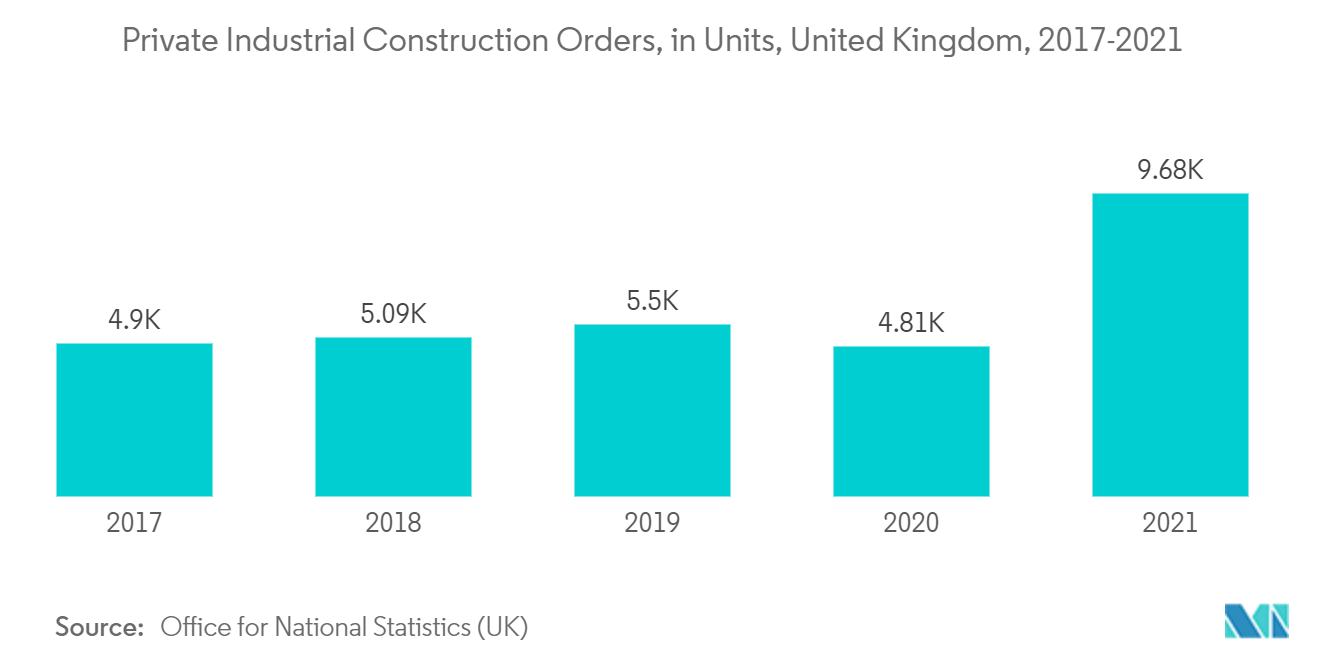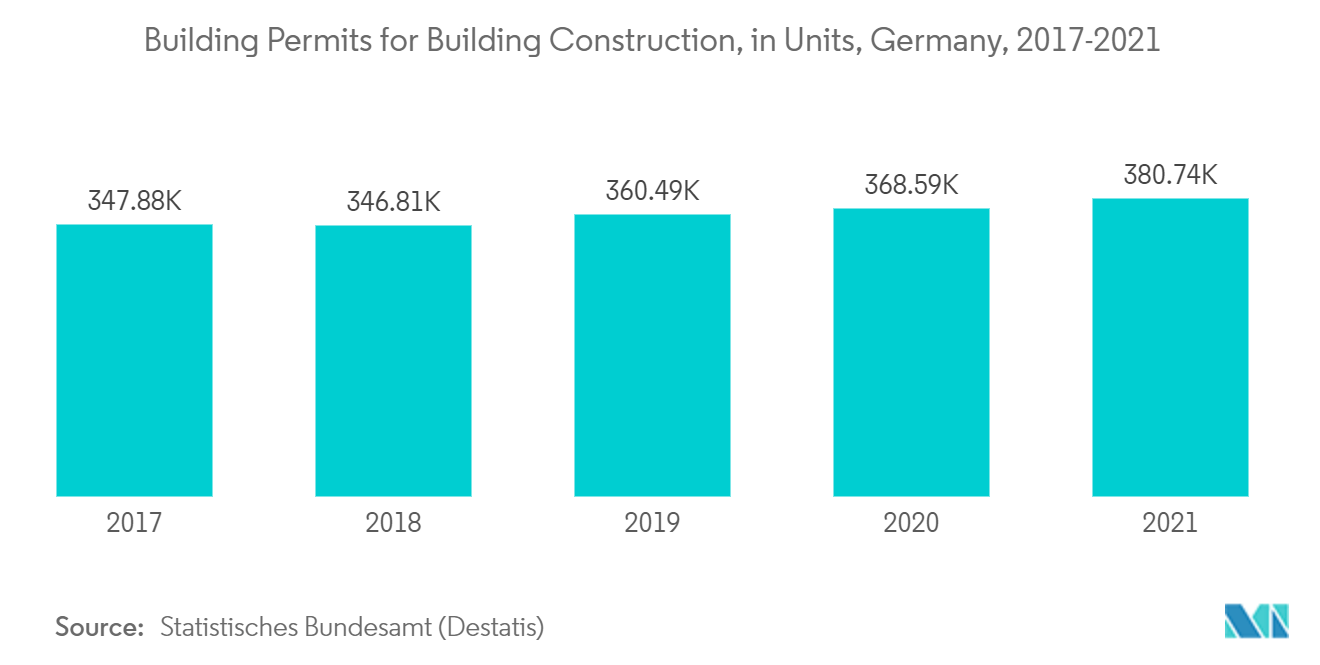Market Trends of Europe Flat Glass Industry
This section covers the major market trends shaping the Europe Flat Glass Market according to our research experts:
Construction Industry is Expected to Drive the Demand for Flat Glass
- The construction industry is the largest end-user segment of the market studied. Moreover, the ongoing trend of smart city projects is also anticipated to drive the flat glass demand.
- Glass is used extensively in the construction industry in windows, façades, doors, interior partitions, balustrades, shop fronts, and railings for stairs and balconies, among other building parts, providing potential opportunities to float glass.
- The body-tinted float glass is a new type of glass in which melted colorants are added for coloring and solar-radiation absorption properties. This type of glass saves energy, reduces heat penetration into buildings, and provides a striking visual effect.
- Previously, flat glass was used for smaller windows in domestic housing since larger windows required toughened glass. Currently, flat glass can also be toughened by going through a heating process, which nearly melts it and then cools it to ambient temperatures using a jet of cold air. The glass requires a greater pressure to break, and this characteristic makes the glass suitable for use in building applications.
- In France, the government has started to take the initial steps toward the development of hosting the 2024 Olympics. For instance, the French government has sanctioned a total of approximately USD 3.3 billion for the construction of the Hermitage towers (two 320-meter-1050-foot towers), which are due to be completed by 2024. The essential infrastructure for the Olympic event requires building 4,500 new dwellings for local people, 100,000 square meters for business activities, and 20,000 new hotel rooms for tourists.
- According to the Glass Alliance Europe, the European Union's (EU-28) production of glass has been steadily increasing over the past years. In 2021, flat glass was the second-largest EU glass segment, at 11.7 million metric tons produced that year.
- According to the Office for National Statistics (UK), in 2021, total private industrial construction orders accounted for 9,677 units, compared to 4,810 units in 2020.
- As per Office for National Statistics (UK), East Midlands was the region with the most new industrial construction orders in 2021, followed by Yorkshire and the Humber in Great Britain. In 2021, there were 1,614 orders in the East Midlands, while orders for Yorkshire and the Humber amounted to 1,191 orders. In Wales, there were 161 new orders and Scotland received 567 construction orders.

Germany is Expected to Dominate the Market
- The construction holds the country's largest market share of flat glass demand. Germany possesses the largest construction industry in Europe. The construction industry in the country has been growing at a slow pace, which is majorly driven by the increasing number of new residential construction activities. The increasing migration to the country has stimulated the demand for new residential construction.
- The non-residential and commercial buildings in the country are expected to witness significant growth in the coming years. The growth is supported by lower interest rates, an increase in real disposable incomes, and numerous investments by the European Union and the German government.
- According to the Statistisches Bundesamt, the number of building permits for residential and non-residential buildings in Germany in 2021 accounted for 129,000 and 29,000 buildings, respectively.
- As per the Statistisches Bundesamt, the revenue for the manufacturing of industrial flat glass in 2021 was valued at USD 1,363.46 million.
- According to the Statistisches Bundesamt (Destatis), in 2021, the government granted permits for a total of 380,736 dwellings, and 368,589 dwellings in 2020.
- On the whole, growing residential and commercial construction activities in the country are expected to drive the market for flat glass at a moderate rate in Germany during the forecast period.


